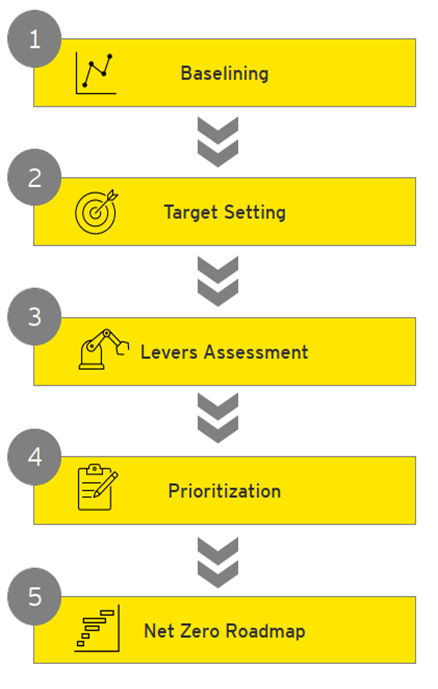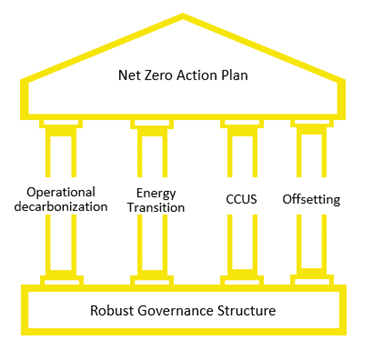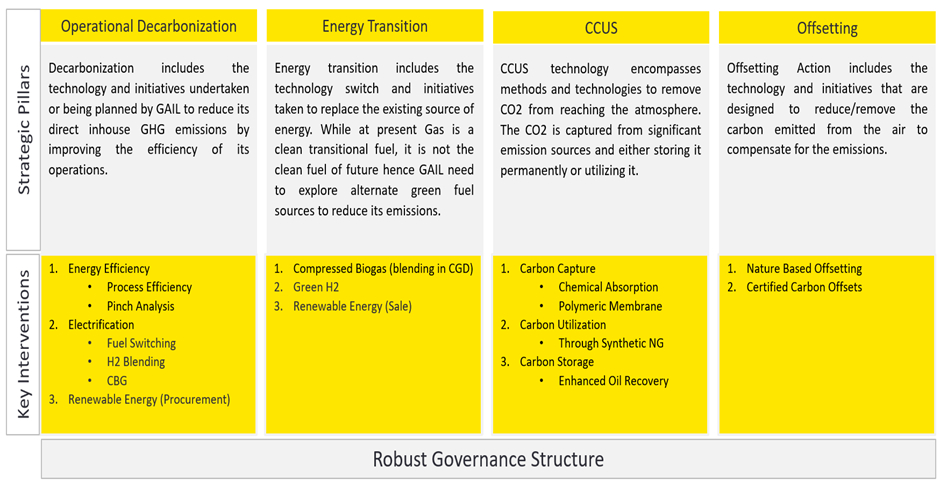Our Commitment
We have undertaken a detailed study on science-based Net-Zero ambition and action plan for GAIL. The study involved a comprehensive baselining of GAIL’s GHG footprint across operational boundaries (Scope 1 and Scope 2) and value chain (Scope 3). Target setting was undertaken by referring to global target setting guidance such as IIGC, SBTi, OGCI, etc., and assessment of global best practices in carbon abatement across the Oil and Gas sector. Furthermore, a comprehensive stakeholder engagement was carried out to review our strategic growth plans and assess organizational readiness toward Net-Zero.
Subsequently, a detailed evaluation of decarbonization levers and energy transition opportunities was carried out through an assessment of technology trends on commercial viability, scalability, and regulatory maturity. Additionally, opportunities for offsetting and green financing (Green bonds, carbon credits, etc.) were also assessed to accelerate the organizational transition to Net-Zero. Based on the assessments and following a science-based approach, we have developed a clear carbon abatement roadmap to indicate short-, medium- and long-term targets across Scope 1, Scope 2, and Scope 3.
Our Net-Zero strategy and clear organization-vide carbon roadmap for GAIL are developed to achieve a 100% reduction in Scope 1 and Scope 2 emissions and a 35% reduction in Scope 3 emissions by 2040.

Net Zero Action Plan
GAIL has undertaken a comprehensive assessment of decarbonization levers and has subsequently developed a Net-Zero action plan.
GAIL’s Net-Zero action plan is supported by four ‘strategic pillars’, which will enable GAIL to accelerate its journey towards Net-Zero.
It is imperative that these pillars are backed by a robust governance structure.


Scope 1 + 2 Reduction:
This reduction will be achieved through sourcing renewable energy, undertaking energy efficiency measures, implementing CCUS technologies, process electrification, and increasing the proliferation of compressed biogas.
By 2040, we expect technologies such as green hydrogen, BESS, and CCUS to achieve commercial viability and scalability. Moreover, by 2040, we expect our operations to reach near optimum energy efficiencies. A combination of technology deployment and process efficiencies will help us achieve a 100% reduction of Scope 1 + 2 emissions.
Scope 3 Reduction:
Reduction of Scope 3 emissions will primarily be done through the increased proliferation of compressed biogas and green hydrogen blending.
Note: CCUS is not considered in Scope 3 emission reduction modelling as it is the prerogative of GAIL’s customers to implement them at consumption points. GAIL is exploring a separate study to assess the feasibility of CCUS for operational decarbonization pilots and partnerships.